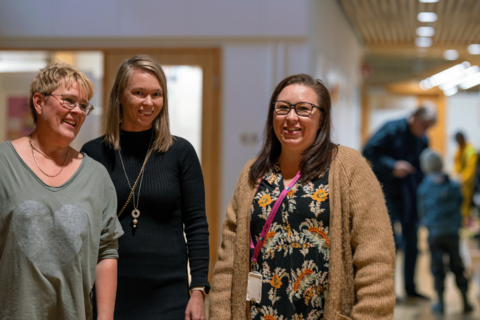Espoo’s solution-oriented approach to early childhood education – results seen in well-being and workflow

In recent years, Espoo has worked actively to improve its management of early childhood education. In western Leppävaara, the results show as better well-being at work, reduced stress, and a stronger sense of community.
Espoo wants to take bold steps to develop early childhood education. Its goal: to become a solution-oriented organisation that seeks new ways to do things. Development work at Finnish Early Childhood Education of Espoo is carried out both at the city level and regionally, taking into account the special features and needs of each area. For instance, western Leppävaara has seen many changes to improve job satisfaction. Only a few years ago, the area had a shortage of special education teachers and a number of unfilled positions. However, the area did not despair and sought, instead, to find solutions together.
“We received feedback that day-to-day work was becoming difficult, well-being issues began to emerge, and children were beginning to miss out on the support they needed, as the work was being left in the hands of too few. There was also a sentiment that special education teaching was lonely. By identifying these difficulties, we began to create new ways to work,” says Mari Frilund. She is the director of early childhood education units at Auroran päiväkoti, Lippajärven päiväkoti, and Heiniemen päiväkoti.
The starting point was to overhaul the management structures and to develop a team model. There was also a desire to have better peer support for special education teachers.
“We clarified the tasks of both the management and other personnel. We created a plan and rules for everyone to follow. Our new team model supports individuals and helps with anticipation and observation,” explains Frilund.
The operational culture in the area has been developed to promote staff participation. The work is still ongoing, but challenges are being identified and addressed, with efforts to find ways to improve future practices. There has already been a significant improvement in workplace wellbeing and recruiting has also become easier. The employees have also begun to show an interest in special education teacher training, which can be taken as a sign of growing job satisfaction.
Frilund summarises the changes: “In the team model, it’s easier to share work if someone is absent. With flexible work, it’s easier to influence your workload and keep it at an appropriate level. Structures have been put in place to support collaboration and community at work, flow of information is now better at different levels, and management has been strengthened, for example, through the introduction of a work partner model.”
Today's special education teaching is a collaborative effort
Special education teacher Anna Pohjakallio has over 30 years of experience in different early childhood education roles in Espoo. For a few years, she ran her own business and worked in other roles. When she was asked to return to western Leppävaara, where she had held a substitute position last autumn, she said yes: “What got me to come back was the positive, pro-development attitude and skilled supervisors. It also gives me the opportunity to teach and make use of my strength, positive pedagogy. The team model allows me to actively share my ideas with others and to receive support when I need it.”
Before work used to be solitary, but these days, there's more open contact with colleagues. There are also regular meetings on the agenda for sharing information and experiences. There are bi-monthly team meetings with the administrative supervisor, and all special education teachers in Espoo get together for a development session every six months. Espoo turns its variety of experience into shared resource capital.
Special education teacher Erika Honkonen was previously a paramedic, after which she worked in early childhood education as a childcarer and teacher, until taking the qualification for a special education teacher.
Honkonen learned the western Leppävaara team model through her internship. She cites the opportunity to shape her own work and the team model as reasons for accepting her current job: “Through the internship, I got to see how a functioning team model supports well-being at work in practice. We are able to share our skills and workload and have an influence on the city level.”
Pohjakallio and Honkonen both feel that the work of a special education teacher is seen as meaningful and valuable in the area: “We all want to work in a way that provides children the support they need. We’re glad to help find ways for colleagues and the children, especially, to succeed. Every day, we see that our work is important. What we want to aim for is to be proactive instead of reactive in helping children and groups.”